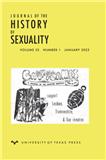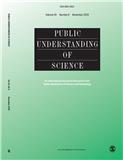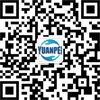Public Understanding Of Science杂志是一本国际优秀期刊,是一本未开放获取期刊。该杂志近三年影响因子分别为:2023年3.5、2022年4.1、2021年3.702。该杂志近三年CiteScore评价分区分别为:2023年7.3区、2022年6.4区、2021年5.3区。该刊专门致力于推进HISTORY & PHILOSOPHY OF SCIENCE领域的研究,涵盖了HISTORY & PHILOSOPHY OF SCIENCE领域的各个方面,汇集所有专家,促进HISTORY & PHILOSOPHY OF SCIENCE领域的更好协作和信息共享。该期刊为HISTORY & PHILOSOPHY OF SCIENCE领域的科研人员提供了一个高影响力的论坛,使该领域的科研人员、从业人员和学生能够接触到尖端的经验性调查分析、学术对话以及行业科研成果的最新发展。通过收录高质量的原创论文和评论论文,促进HISTORY & PHILOSOPHY OF SCIENCE领域的应用与发展。该期刊还将该领域的创新与应用,以提高研究的质量和实用性。近年来在该刊上发文的国家和地区主要有:Wales(发文量2)、Vietnam(发文量1)、USA(发文量69)、UNITED ARAB EMIRATES(发文量1)、Taiwan(发文量1)、Switzerland(发文量12)。
Public Understanding Of Science是一本由SAGE出版社发行的知名HISTORY & PHILOSOPHY OF SCIENCE期刊。该杂志社联系方式Public Underst. Sci.。审稿过程是确保期刊质量的关键环节。Public Understanding Of Science杂志的审稿速度平均需要 。这一时间周期既体现了编辑部对稿件质量的严格把关,也反映了审稿专家对学术研究的尊重和支持。在这个过程中,作者们可以充分利用这段时间对自己的研究成果进行完善和优化,以提高论文的质量和影响力。如果您对该期刊感兴趣,并希望了解更多关于投稿流程、投稿要求和技巧的信息,您可以咨询本站的客服老师,我们将帮助您了解期刊的投稿要求、审稿流程以及可能遇到的问题,并根据您的具体情况提供相应的建议和解决方案。
| CiteScore | SJR | SNIP | CiteScore排名 | |||
|---|---|---|---|---|---|---|
| 7.3 | 1.322 | 1.584 | 学科类别 | 分区 | 排名 | 百分位 |
|
大类:大类:ArtsandHumanities
小类:小类:ArtsandHumanities(miscellaneous)
|
Q1 | 30/552 | 94 | |||
|
大类:大类:ArtsandHumanities
小类:小类:Communication
|
Q1 | 38/511 | 92 | |||
|
大类:大类:ArtsandHumanities
小类:小类:DevelopmentalandEducationalPsychology
|
Q1 | 40/360 | 89 | |||
| 按JIF指标学科分区 | 收录子集 | 分区 | 排名 | 百分位 |
|---|---|---|---|---|
| 学科:COMMUNICATION | SSCI | Q1 | 24 / 227 | 89.6 |
| 学科:HISTORY & PHILOSOPHY OF SCIENCE | AHCI, SSCI | Q1 | 3 / 104 | 97.6 |
| 按JCI指标学科分区 | 收录子集 | 分区 | 排名 | 百分位 |
|---|---|---|---|---|
| 学科:COMMUNICATION | SSCI | Q1 | 11 / 227 | 95.37 |
| 学科:HISTORY & PHILOSOPHY OF SCIENCE | AHCI, SSCI | Q1 | 5 / 104 | 95.67 |
文章名称
引用次数
Reimagining publics and (non) participation: Exploring exclusion from science communication through the experiences of low-income, minority ethnic groups
14
Scientists views about communication objectives
14
The different audiences of science communication: A segmentation analysis of the Swiss populations perceptions of science and their information and media use patterns
12
Climate change, cultural cognition, and media effects: Worldviews drive news selectivity, biased processing, and polarized attitudes
12
Fostering public trust in science: The role of social media
11
Hot topics in science communication: Aggressive language decreases trustworthiness and credibility in scientific debates
11
In consensus we trust? Persuasive effects of scientific consensus communication
9
Jargon as a barrier to effective science communication: Evidence from metacognition
9
Comparing science communication theory with practice: An assessment and critique using Australian data
9
Changes in the influence of affect and cognition over time on consumer attitude formation toward nanotechnology: A longitudinal survey study
8
国家/地区
发文量
TUSA
69
TEngland
44
TGERMANY (FED REP GER)
24
TNetherlands
16
TAustralia
15
TSwitzerland
12
TSpain
10
TCanada
9
TDenmark
9
TIsrael
9















